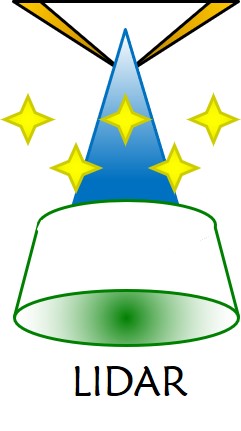Lidar Monitoring of Extreme Temperature Events
Context
When it comes to monitor meteorological parameters, such as the air temperature, current operational instruments are numerous and varied, from ground-based in-situ stations to polar-orbiting satellites sounding the atmosphere. Still, this set of powerful tools would benefit from being completed by an instrument capable of following the diurnal cycle of the planetary boundary layer with high spatial and temporal resolutions in the low troposphere. This need for innovative instrumentation is striking during Extreme Temperature Events (ETEs) which are associated with steep gradients along the vertical and may suddenly emerged. For instance, two opposite ETEs, a cold and a warm one, occurred in recent years in France. Both triggered by atmospheric blocking situations, the first ETE lasted 6 days in late February 2018 with the onset of a cold wave surging from Siberia, and the second is a short heatwave that occurred by the end of July 2020.

After a proper calibration using concomitant radiosoundings, the pure rotational Raman channel newly equipped on the Weather and Aerosol Lidar was operational 20 km south of Paris during these two ETEs. The lidar vertical profiles of temperature is derived with an uncertainty of less than 1 °C within both the planetary boundary layer and the lower/middle free troposphere (~3 / 6 km for day / night), with a final vertical resolution of 50 m and a temporal resolution of 20 minutes.
Such capabilities fulfil the observational requirements of the World Meteorological Organization and fill a gap left behind by current operational instruments as demonstrated using comparisons conducted with the lidar, the Infrared Atmospheric Sounding Interferometer (IASI) and modelling outputs of ECMWF. Our results show that during these events both ECMWF reanalyses and forecasts are overall in very good accordance with lidar observations (correlation > 0.9 in average). Still, they show warm biases (~1-2°C) compared with the lidar and improvable temperature field representation in the boundary layer. The radiances measured by the Infrared Atmospheric Sounding Interferometer, assimilated in the operational model, do not capture temperature below ~2 – 3 km adequately mainly due to the altitude location of its weighting functions. The bias computed against the lidar reaches 2°C during the heatwave and 4°C during the cold wave case in the first 2 km of the atmosphere, beyond expected errors found in the literature.
The ability of a pure rotational Raman lidar such as WALI to continuously monitor the thermodynamic state of the lower troposphere, as represented in the followintg figure, allows to perform the validation of level 2 products from spaceborne instruments like IASI as well as to assess the capacities of meteorological models to retrieve the atmospheric temperature field particularly during extreme winter events. This study shows the complementarity between ground-based lidar continuous measurements and polar-orbiting spaceborne passive sounders to retrieve temperature, especially within the planetary boundary layer, which is critical in terms of energy fluxes and pollutants dispersion.

